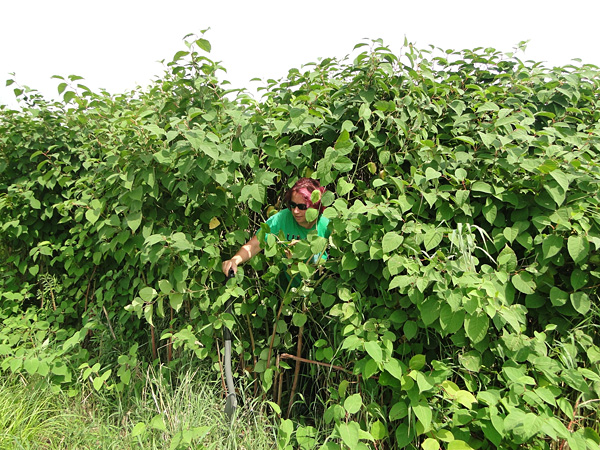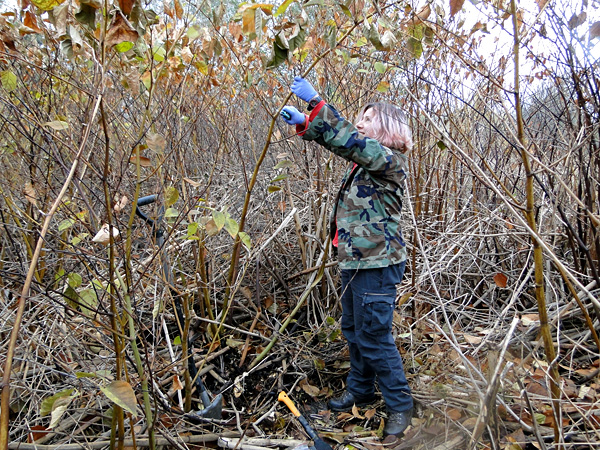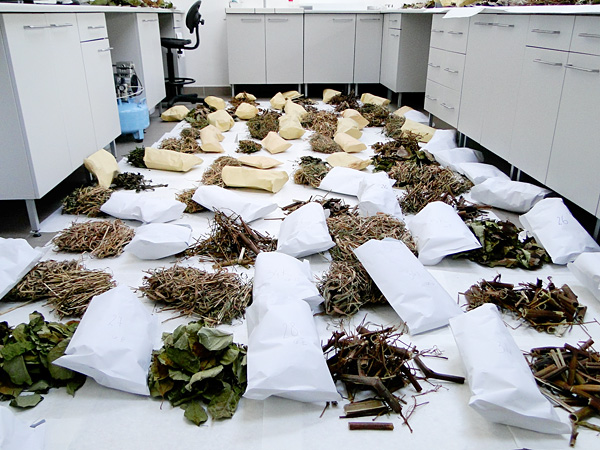Ecosystem changes driven by Reynoutria japonica invasion: linking quantity and chemical quality of plant biomass to soil properties
Summary
Biological invasions are one of the most important global environmental problems related to human activity. Invasions of alien plant species can modify the functioning of ecosystems, inter alia, by reducing biodiversity, affecting primary production and decomposition of dead organic matter, and nutrient cycling. Knotweed (Reynoutria japonica) is native to East Asia and is currently one of the most invasive plant species in Europe and North America. This project enables a comprehensive characterization of changes caused by knotweed invasion in the soil environment and the understanding of the mechanisms of these changes. The project includes both field studies and pot experiments and uses a number of advanced analytical methods to characterize the plant biomass in terms of chemical properties, and the soil in terms of both chemical and microbiological properties. A comprehensive assessment of the magnitude, direction, and mechanisms of changes occurring in the soil as a result of knotweed invasion is crucial not only from the point of view of basic research, but also practical activity, as the changes caused by the invasion may affect the process of habitat regeneration. Despite the removal of the invasive plant, re-colonization of the altered soil by native plant species may be difficult or impossible.
The objectives of the project include: (1) Comparison of the physicochemical (pH, content of elements and phenolic compounds) and microbiological (enzymatic activity, biomass and taxonomic composition of bacterial and fungal communities) soil properties between sites with knotweed and native plant species in field conditions; (2) Comparison of quantity and chemical quality (content of elements and phenolic compounds) of aboveground and belowground biomass of knotweed and native species; (3) Relating the quality of plant biomass with soil properties; (4) Analysis of seasonal variability (within the season - spring, autumn and between growing seasons) of physicochemical and microbiological soil properties under knotweed and native plant species in field conditions; (5) Assessment of the relative importance of knotweed growth (the presence of roots and chemical compounds they exude) and the deposition of knotweed litter for soil properties and their seasonal variability in a pot experiment; (6) Investigation of changes in soil properties in response to the addition of various amounts of extracts from knotweed shoots and rhizomes in relation to the chemical quality of these extracts.
So far, some of the data collected under the project have been processed. Field studies carried out on 25 research sites located in fallows and riparian areas in southern Poland showed that knotweed produces several times more aboveground and belowground biomass than accompanying native plant species, with leaves accounting for 30% and stems for 70% of aboveground biomass of knotweed. Knotweed biomass is characterized by low chemical quality, including low N and P contents, and high C/N and C/P ratios. This is especially pronounced in the case of knotweed stems. These properties may slow down the rate of microbial decomposition of dead organic matter produced by knotweed which may remain largely undecomposed on the soil surface for a long time, changing soil physical, chemical, and microbiological properties. The low chemical quality of knotweed biomass is also related to a very high content of secondary metabolites, namely phenolic compounds, for example condensed tannins, catechin, emodin, and resveratrol, in comparison to the native species tested, especially in knotweed rhizomes and/or leaves. These compounds have the potential to inhibit the activity and growth of microorganisms and thus further slow down the rate of decomposition of organic matter and other soil processes. Our research showed that knotweed significantly reduces the number (biomass) of soil microorganisms, including bacteria, saprotrophic fungi, and symbiotic (arbuscular mycorrhizal) fungi. The reduced soil microbial biomass, in particular arbuscular mycorrhizal fungi, could potentially lead to poor native species growth and habitat revitalization following mechanical knotweed removal. However, contrary to expectations, the knotweed did not show a strong unidirectional influence on soil physicochemical properties and on most of the studied indicators of microbial activity, for example the activity of enzymes involved in the decomposition of dead organic matter. The results may indicate that there is no knotweed effect on these parameters, or what is more likely, that knotweed effect varies between study sites. The impact may be ambiguous, that is, varying in magnitude and direction (positive or negative), depending on the initial characteristics of the ecosystem, for example soil quality or vegetation type.

Photo: Anna Stefanowicz.

Photo: Anna Stefanowicz.

Photo: Anna Stefanowicz.





